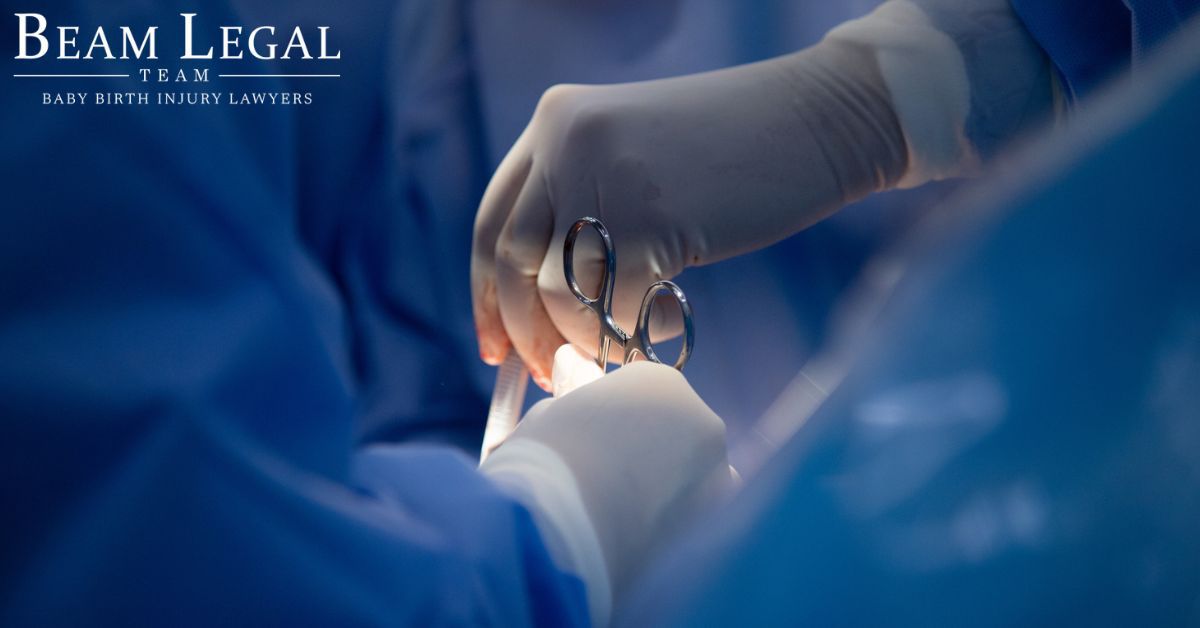
C-sections are often required during labor under circumstances where a vaginal delivery would pose a risk to the mother, the baby, or both. Common situations that may necessitate a C-section include:
- Fetal Distress: A C-section may be required if the baby is not getting enough oxygen or shows signs of potentially life-threatening distress, such as an abnormal heart rate.
- Labor Stalls: When labor is not progressing, and the cervix isn’t opening enough despite strong contractions over a prolonged period, the doctor may order a C-section. Also sometimes, a baby remains too high above the pelvis and won’t naturally descend.
- High Risk Position of the Baby: Breech (feet or buttocks first) or transverse (sideways) positions can make vaginal delivery unsafe or impossible. In these cases, C-sections may be necessary for safe delivery.
- Multiple Births: While twins can often be delivered vaginally, the need for a C-section may arise, especially if there are more than two babies or if they are not in a safe position for vaginal birth.
- Pre-eclampsia or Other Maternal Health Issues: Conditions like high blood pressure (pre-eclampsia) or active genital herpes can necessitate a C-section to protect the health of the mother and baby.
- Placenta Previa: When the placenta covers the cervix, vaginal delivery may be too risky and a C-section may be performed instead.
- Umbilical Cord Prolapse: If the umbilical cord slips through the cervix into the vagina before the baby, it can compress the cord and cut off the baby’s oxygen supply, requiring an immediate C-section to protect the baby’s life.
- Previous C-section: Depending on the type of incision and other factors, some women may need a repeat C-section if they’ve had one in the past.
- IUGR or Intrauterine Growth Restrictions: When a baby stops or slows growing in utero, a c-section may be necessary to get the baby into a healthy newborn environment.
When Might Medical Malpractice Occur During a C-Section?
Medical malpractice during a C-section might occur under several circumstances, typically when the acknowledge standard of medical care is breached, and the mother or baby is harmed as a result. This breach of care can result from actions taken or not taken by healthcare professionals involved in the surgery. Examples include:
- Delayed Decision to Perform a C-Section: Doctors who fail to order C-sections in a timely manner when there are clear indications that it is necessary for the safety of the mother or baby may be held liable for medical malpractice.
- Improper Handling of Complications: Doctors and surgeons who inadequately address surgical complications such as excessive bleeding or infections, or fail to recognize and treat postoperative complications in either the mother or the baby can be held liable for their negligence.
- Lack of Informed Consent: Medical malpractice may occur when doctors fail to inform their patients about the risks, benefits, and alternatives to a C-section, leading to a lack of informed consent.
- Inadequate Postoperative Care: Doctors are required to provide appropriate care after C-sections. Failing to do so is considered malpractice, as it could result in infections, unmanaged pain, or other complications.
- Delayed Decision to Call Neonatal Team
In any of these situations, if the failure to meet the accepted standard of medical care directly results in harm or injury to the mother or baby, it may be considered medical malpractice.
What Compensation Is Available in a C-Section Medical Malpractice Claim?
The types of compensation injured children and their families may receive in C-section medical malpractice claims generally falls into several categories. These can include:
- Medical Expenses: This covers costs for current and future medical care related to the complications from the negligent C-section, including hospital stays, surgeries, medications, physical therapy, and any specialized care needed for recovery.
- Lost Wages and Earning Capacity: Compensation may be awarded for lost wages if the injury prevents the mother from returning to work for a period of time. If the injury impacts the mother or child’s ability to earn a living in the future, compensation for lost earning capacity may also be included.
- Pain and Suffering: This is for the physical and emotional distress caused by the complications from the C-section. Pain and suffering damages are considered non-economic and can vary widely in amount.
- Loss of Enjoyment of Life: If the complications from the botched C-section lead to long-term or permanent limitations on the mother’s ability to enjoy life and engage in activities she valued before the surgery, compensation for this loss may be awarded.
- Punitive Damages: In some cases, where the conduct of the healthcare provider is found to be especially egregious or reckless, punitive damages may be awarded as a way to punish the negligent doctor and deter similar conduct in the future. However, punitive damages are not available in all jurisdictions or cases.
- Wrongful Death: If the botched C-section results in the death of the mother or baby, the family may receive compensation for wrongful death, which can include funeral and burial expenses, loss of the deceased’s expected earnings, and loss of companionship.
